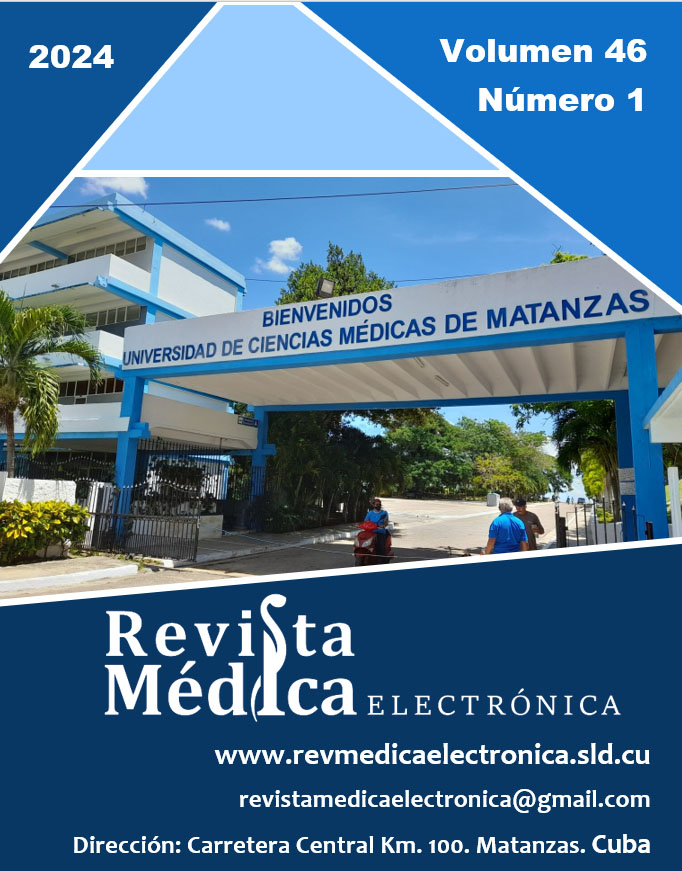Efficacy and safety of Proctokinasa® suppository in the treatment of acute pelvic inflammatory disease
Keywords:
acute pelvic inflammatory disease, Proctokinasa®, controlled clinical trialAbstract
Introduction: Acute pelvic inflammatory disease is a common entity in young women of reproductive age and it is a leading cause of infertility. The search for an effective and safe anti-inflammatory treatment that relieves pain, avoids complications and sequels, it is priority for its treatment.
Objective: To evaluate the efficacy and safety of the treatment with Proctokinasa® in acute pelvic inflammatory disease grades I and II.
Materials and methods: An open, controlled clinical trial was carried out from January 2017 to January 2018 which included 76 patients diagnosed with acute pelvic inflammatory disease in primary health care; they were randomize assigned to two treatment groups: Proctokinasa® main group, who received one unity/8h for 2 days, and the Piroxican group, 1 suppository of 20 mg/24h per 7 days. The recommended oral antibiotic therapy was started simultaneously. Clinical and ultrasound response to treatment were evaluated. Adverse events were evaluated.
Results: Clinical response was stated after 72 hours of treatment inmore than 50% of the patients in both groups, and it was 100% for the Proctokinasa® group in the last two evaluations (days 10 and 15). Remission of ultrasound alterations was evident in 96.9% of the Proctokinasa® group. Adverse events were few and mild.
Conclusions: The use of Proctokinasa® was effective and safe in the treatment of acute pelvic inflammatory disease grades I and II.
Downloads
References
2. Baquedano Mainar L, Rubio CA, Calvo IA, et al. Protocolo aragonés de enfermedad inflamatoria pélvica. Prog Obstet Ginecol [Internet]. 2020 [citado 21/10/2021];63:347-54. Disponible en: https://sego.es/documentos/progresos/v63-2020/n6/01%20Protocolo%20aragones%20de%20enfermedad%20inflamatoria%20pelvica.pdf
3. Curry A, Williams T, Penny ML. Pelvic Inflammatory Disease: Diagnosis, Management, and Prevention. Am Fam Physician [Internet]. 2019 [citado 21/10/2021];100(6):357-64. Disponible en: https://www.aafp.org/pubs/afp/issues/2019/0915/p357.html?utm_medium=email&utm_source=transaction
4. Villarreal-Ríos E, Benítez-Benítez S, Vargas-Daza ER, et al. Incidencia de infecciones cervicovaginales diagnosticadas por citología y no tratadas médicamente. Ginecol Obstet Mex [Internet]. 2018 [citado 21/10/2021];86(3):186-92. Disponible en: http://www.medigraphic.com/pdfs/ginobsmex/gom-2018/gom183d.pdf
5. Dirección de Registros Médicos y Estadísticas de Salud. Anuario estadístico de salud 2015 [Internet]. La Habana: MINSAP; 2016 [citado 21/03/2023]. Disponible en: http://files.sld.cu/dne/files/2016/04/Anuario_2015_electronico-1.pdf
6. Urgellés Carreras S, Álvarez Fiallo M, Ramos Zamora V, et al. Caracterización clínica epidemiológica de pacientes con enfermedad inflamatoria pélvica tumoral. Rev Cub Med Mil [Internet]. 2021 [citado 21/03/2023];50(1):e714. Disponible en: http://scielo.sld.cu/scielo.php?script=sci_arttext&pid=S0138-65572021000100006&lng=es
7. Loaiza J, Romero Y, Albornoz R. Enfermedad inflamatoria pélvica: Diagnóstico y tratamiento oportuno. Universidad: Ciencia y Tecnología [Internet]. 2020 [citado 21/10/2021];1(1):19-27. Disponible en: https://uctunexpo.autanabooks.com/index.php/uct/article/view/311
8. Menezes ML, Giraldo PC, Linhares IM, et al. Brazilian Protocol for Sexually Transmitted Infections, 2020: pelvic inflammatory disease. Rev Soc Bras Med Trop [Internet]. 2021 [citado 21/10/2021];54(suppl 1):e2020602. Disponible en: https://www.scielo.br/j/rsbmt/a/jRG6vxVRKqJtMdTs7F7h6vM/
9. Santana Suárez MA, Suárez Suárez B, Ocón Padrón L, et al. Diagnóstico y tratamiento de la enfermedad pélvica inflamatoria. Clin Invest Ginecol Obstet [Internet]. 2018 [citado 21/10/2021];45(4):157-62. Disponible en: https://www.sciencedirect.com/science/article/abs/pii/S0210573X17300345
10. Córdova Chacón CA, Baquerizo Chala AF, Roca Maldonado CA, et al. Enfermedad inflamatoria pélvica. Recimundo [Internet]. 2022 [citado 21/03/2023];6(3):30-6. Disponible en: https://recimundo.com/index.php/es/article/view/1644
11. Dhasmana D, Hathorn E, McGrath R, et al. The effectiveness of nonsteroidal anti-inflammatory agents in the treatment of pelvic inflammatory disease. Syst Rev [Internet]. 2014 [citado 21/10/2021];3(79). Disponible en: http://www.systematicreviewsjournal.com/content/3/1/79
12. Quintero L, Hernández F, Acelia M, et al. Initial evidence of safety and clinical effect of recombinant streptokinase suppository in acute hemorrhoidal disease. Open, proof-of-concept, pilot trial. Biotecnol Apl [Internet]. 2010 [citado 21/10/2021];27:277-80. Disponible en: http://scielo.sld.cu/pdf/bta/v27n4/bta03410.pdf
13. Gutiérrez-Zárraga J, Méndez-Gutiérrez E, Rodríguez-Wong U. Estreptoquinasas. Usos y aplicaciones médicas. Rev Hosp Jua Mex [Internet]. 2014 [citado 29/05/2018];81(3):161-5. Disponible en: http://www.medigraphic.com/pdfs/juarez/ju-2014/ju143e.pdf
14. Hernández-Bernal F, Castellanos-Sierra G, Valenzuela-Silva CM, et al. Recombinant streptokinase vs hydrocortisone suppositories in acute hemorrhoids: A randomized controlled trial. World J Gastroenterol. 2015;21(23):7305-12. DOI: 10.3748/wjg.v21.i23.7305.
15. Savaris RF, Fuhrich DG, Maissiat J, et al. Antibiotic therapy for pelvic inflammatory disease. Cochrane Database Syst Rev [Internet]. 2020 [citado 21/10/2021];8(8). Disponible en: https://pubmed.ncbi.nlm.nih.gov/32820536/
16. Bourdel N, Alves J, Pickering G, et al. Systematic review of endometriosis pain assessment: how to choose a scale? Hum Reprod Update. 2015;21(1):136-52. DOI: 10.1093/humupd/dmu046.
17. Álvarez-Pabón Y, Sepúlveda-Agudelo J, Díaz-Martínez LA. Enfermedad pélvica inflamatoria: análisis retrospectivo. Ginecol Obstet Mex [Internet]. 2017 [citado 26/05/2018];85(7):433-41. Disponible en: http://www.medigraphic.com/pdfs/ginobsmex/gom-2017/gom177d.pdf
18. Paucar Pino MJ, Canchari LLallhuI L. Características de las mujeres con diagnóstico de enfermedad pélvica inflamatoria del Hospital de Lircay, Huancavelica de junio 2018 a junio 2019 [tesis en Internet]. Huancavelica: Universidad Nacional de Huancavelica; 2021 [citado 21/10/2021]. Disponible en: https://repositorio.unh.edu.pe/items/2d3bc2df-ca03-4abf-9ffb-8fcbcbeb467a
Downloads
Published
How to Cite
Issue
Section
License
All content published in this journal is Open Access, distributed under the terms of the CC BY-NC 4.0 License.
It allows:
- Copy and redistribute published material in any medium or format.
- Adapt the content.
This will be done under the following terms:
- Attribute the authors' credits and indicate whether changes were made, in which case it must be in a reasonable way.
- Non-commercial use.
- Recognize the journal where it is published.
The copyrights of each article are maintained, without restrictions.






